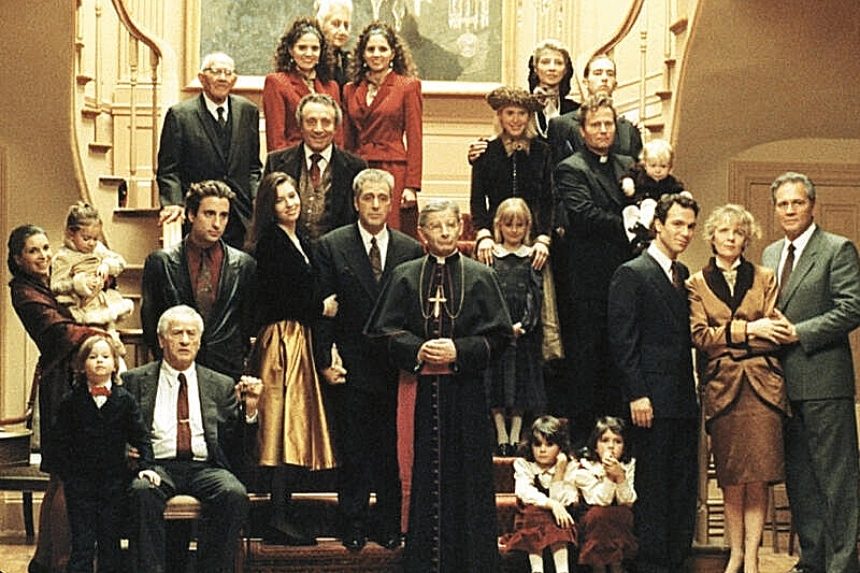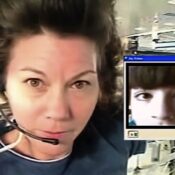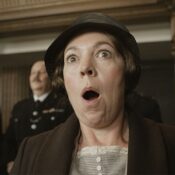The Godfather Coda: The Death of Michael Corleone
⭐ ⭐ ⭐ ⭐
Rating: R
Run Time: 2 hours 42 minutes
Stars: Al Pacino, Diane Keaton, Andy Garcia, Talia Shire, Eli Wallach
Writers: Mario Puzo, Francis Ford Coppola
Director: Francis Ford Coppola
On Blu-ray and in Theaters
Let’s get one thing straight: the original 1990 version of The Godfather Part III was by no means a bad film. It was, in fact, a very good film that suffered only by comparison to the two that preceded it, films that merely happened to be among the most visionary and influential of the entire 20th century.
Part III, which tells the story of now-aging mob boss Michael Corleone (Al Pacino) trying to find a twisted blend of legitimacy and redemption by going into business with the Catholic Church, was actually an international hit and nominated for seven Oscars, including Best Picture. Still, snarky critics and film scholars sniffed with disapproval — a slight that apparently gnawed at director Francis Ford Coppola for nearly 30 years.
Now Coppola presents a slightly shorter (by about 10 minutes), moderately re-structured, visually cleaned-up version of the film, affixing to it the title he and Godfather author Mario Puzo originally intended: The Godfather Coda: The Death of Michael Corleone.
With his re-edits of Apocalypse Now and The Cotton Club, Coppola has made it clear he considers all his movies to be perpetual works in progress. But his touch in this case is especially deft, and virtually everything he’s chosen to do here does, indeed, improve upon the original.
Most importantly, Coppola has streamlined the opening: The initial scene now, in which Michael presents his business plan to a crooked Archbishop (squinty-eyed Donal Donnelly) didn’t come until 40 minutes into the first version, way too late to draw us into what would become the film’s driving plot point. Everything in the movie flows from that encounter, most significantly the grotesque similarities between the criminal realm Michael longs to leave behind and the “legitimate” world of global power and finance he so desperately wants to be a part of.
Happily, Coppola has left intact the film’s soaring set pieces, which stand up to anything in the first two Godfather films. A tense but generally cordial encounter in Michael’s office between Michael’s nephew Vincent (Andy Garcia) and tough-talking mob boss wannabe Joey Zasa (Joe Mantegna) lurches into unexpected and nerve-jangling violence. A shootout on a crowded Little Italy street screams with claustrophobic panic. A climactic tragedy on the steps of an ancient opera house is staged with the bravura of a Puccini finale. And the film’s most absolutely insane moment of mayhem, the wholesale slaughter of the Mob’s hierarchy in an Atlantic City ballroom, literally explodes from the screen — turn the volume up for this one.
In fact, Godfather Coda is less a flowing narrative than a series of thematically linked scenes, most of which play as fully-realized individual mini-dramas. In an age when movies seem to rush scenes along, reducing each one to a few expository lines before moving on, Coppola gives his characters plenty of room to breathe, with uncanny effect. Michael’s uneasy reunion with his ex-wife (Diane Keaton, sad and strong) follows a touching and tragic arc all its own. The budding romance between Vincent and his first cousin Mary (Sofia Coppola, pleasingly plain and endearingly awkward) hums with uncertainty. And for a startling, heartbreaking scene in which Michael confesses his lifetime of sins to a compassionate Vatican cardinal (Raf Vallone), Coppola lets the film run for an embarrassingly long time from behind a stand of bushes, leaving us with the uneasy sense we are eavesdropping on a man’s emotional undoing.
For this third Godfather film, released 16 years after the second, Coppola truly got the old band back together. Of the original cast, only Robert Duvall chose not to return. Talia Shire ages gracefully as Connie, long since having forgiven Michael for rubbing out her abusive husband, but now hardened by years as a Mob accomplice. Even Al Martino is back as Johnny Fontane, the Frank Sinatra stand-in whose frustrated career ambitions in The Godfather led to that bloody horse head in Jack Woltz’s bed.
There’s one change that permeates nearly every frame of Godfather Coda, and it’s perhaps the most welcome one of all. The first two films, set in the 1950s, were infused in that golden haze movies often use to establish a sense of nostalgia, or to evoke a time gone by. For some reason, the same filter was used in 1990’s Godfather III, which was set not in the distant past but in the relatively recent early 1980s. It was a distracting choice, one that seemed to work against the film’s stated purpose of updating the story of Michael Corleone. Happily, working from the film’s original negatives, Coppola does away with that particular conceit, and now the vision of cinematographer Gordon Willis — who’d shot both earlier films — looks better than ever. In fact, visually speaking Godfather Coda may be the most handsome of all three installments.
The re-do’s new subtitle — The Death of Michael Corleone — is, at first blush, a curious choice, since Coppola’s re-cutting of the final scene removes the literal sense of it. On the other hand, thanks to the revised fade-out one is left to contemplate the long, operatically tragic death Michael’s life has been all along — starting with that moment in The Godfather when he tossed aside his aspirations for a normal life and instead threw in with the family business.
The genius in Pacino’s performance in all three Godfather films is, of course, his infuriating ability to draw us into Michael’s tortured soul; to yearn for him to find the strength to follow his better angels, knowing that only then will he find happiness. Indeed, the most disconcerting moment of Coda — as in the original version — comes near the end, when we find ourselves gazing through the sniper scope of an assassin’s rifle. In our sights: Michael in the box of an Italian opera house, flanked by his beloved daughter and the ex-wife he never stopped loving, beaming ecstatically as his son performs a soaring aria on stage. The crosshairs focus on Michael’s heart.
There’s Hitchcockian tension in the scene, to be sure, but there’s something even more sinister at work: The dread realization that we’re half-hoping the killer will succeed.
At least, and at last, we think, Michael just might die a happy man.
Featured image: The Godfather Coda (Paramount Pictures)
Become a Saturday Evening Post member and enjoy unlimited access. Subscribe now



